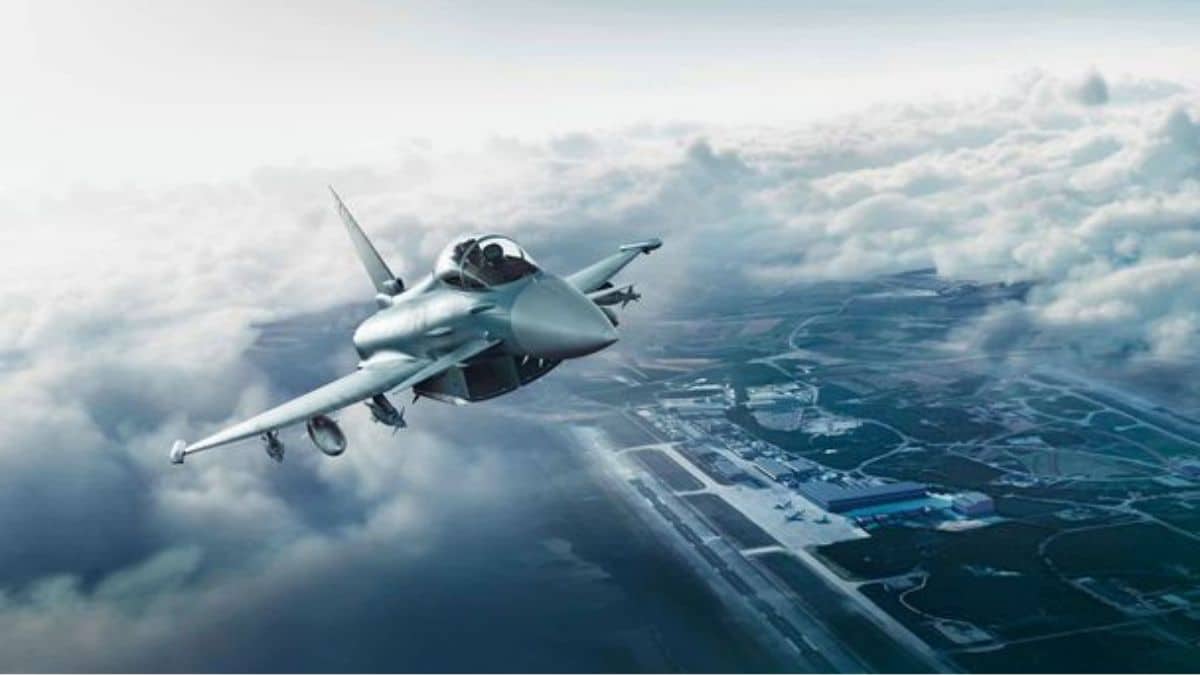
The inception of the Typhoon, a state-of-the-art fighter aircraft, traces back to the collaborative efforts of the Future European Fighter Aircraft program launched in 1983. A multinational initiative involving the UK, Germany, France, Italy, and Spain aimed to develop a cutting-edge fighter, building on their past success with the Panavia Tornado. Originally envisioned as a collective project, the collaboration faced hurdles, leading to France’s departure from the consortium, choosing to independently pursue the development of the Dassault Rafale.
In 1986, the British Aerospace EAP, a technology demonstration aircraft, took flight, marking a significant milestone in the Typhoon’s journey. The Eurofighter prototype had its maiden flight in March 1994. The aircraft officially adopted the name “Typhoon” in September 1998, coinciding with the signing of the first production contracts.
The geopolitical landscape shifted with the end of the Cold War, impacting the demand for European fighter aircraft. Disputes over cost and work share further complicated the Typhoon’s development. Despite these challenges, the Typhoon entered operational service in 2003 and is currently deployed by the air forces of Austria, Italy, Germany, the United Kingdom, Spain, Saudi Arabia, and Oman. Additional orders from Kuwait and Qatar have expanded the procurement total to 623 aircraft as of 2019, showcasing the enduring relevance and global appeal of the Typhoon in modern air forces.
Specifications:
The Eurofighter Typhoon stands as a pinnacle of agility, excelling both at supersonic speeds and low velocities, achieved through an intentionally relaxed stability design. Its prowess is facilitated by a quadruplex digital fly-by-wire control system, ensuring artificial stability, as the inherently unstable design necessitates continuous electronic adjustments. This “carefree” fly-by-wire system prevents pilots from exceeding specified maneuvering limits, enhancing overall control and safety.
Primary roll control is executed through ailerons, while pitch control involves the coordinated operation of canards and ailerons, strategically managing airflow disruption to inner elevons. The large, singular rudder is instrumental for yaw control. The Typhoon’s engines benefit from a chin double intake ramp positioned beneath a splitter plate.
While not classified as a stealth fighter, the Typhoon incorporates measures to diminish its radar cross-section (RCS), particularly from the frontal aspect. Notable features include jet inlets concealing the front of the engines, minimizing radar reflections. Furthermore, highly swept leading edges of the wing, canards, and fin redirect radar energy away from the front. Some external weapons are semi-recessed, providing partial shielding from radar waves. Radar-absorbent materials (RAM), developed by EADS/DASA, further reduce radar reflectivity on key surfaces.
A sophisticated Defensive Aids Sub-System, known as Praetorian (formerly Euro-DASS), is integral to the Typhoon’s defensive capabilities. Praetorian autonomously monitors and responds to air and surface threats, offering a comprehensive and prioritized assessment while handling multiple threats simultaneously. Detection methods include a Radar Warning Receiver (RWR), a Missile Warning System (MWS), and, exclusive to UK Typhoons, a Laser Warning Receiver (LWR). Defensive countermeasures comprise chaff, flares, an Electronic Countermeasures (ECM) suite, and a towed radar decoy (TRD). The extensive ESM-ECM and MWS system incorporates 16 antenna array assemblies and 10 radomes.
Powering the Eurofighter Typhoon are two Eurojet EJ200 engines, each capable of delivering up to 60 kN (13,500 lbf) of dry thrust and over 90 kN (20,230 lbf) with afterburners. The engine’s “war” setting allows for increased thrust without compromising durability. Combining leading technologies from European companies, the EJ200 engine integrates advanced digital control, health monitoring, wide chord aerofoils, single crystal turbine blades, and a convergent/divergent exhaust nozzle. This amalgamation results in a high thrust-to-weight ratio, supercruise capability, low fuel consumption, and modular construction, showcasing the Eurofighter Typhoon’s prowess as a multi-mission fighter.
The Eurofighter Typhoon boasts a formidable armament, featuring a 27 mm Mauser BK-27 revolver cannon with 150 rounds. Its 13 hardpoints—8 under-wing and 5 under-fuselage pylon stations—endow the aircraft with a payload capacity exceeding 9,000 kg (19,800 lb). In a typical multi-role configuration for a Tranche 2-P1E, the Eurofighter can be armed with a combination of 4 AIM-120 AMRAAMs, 2 ASRAAM/IRIS-Ts, 4 EGBU-16/Paveway-IVs, and 2 1000-litre supersonic fuel tanks, accompanied by a targeting pod.
The Eurofighter’s missile arsenal encompasses a variety of air-to-air and air-to-surface options. Air-to-air missiles include the AIM-120 AMRAAM, MBDA Meteor, IRIS-T, AIM-132 ASRAAM, and AIM-9 Sidewinder. For air-to-surface missions, the Eurofighter can deploy Storm Shadow/Scalp EG, Brimstone, AGM-88 HARM, AGM-65 Maverick, Taurus KEPD 350, and the upcoming SPEAR 3.
Anti-ship capabilities are enhanced with the inclusion of the Marte ER, accommodating up to 6 missiles at 6 hardpoints, and plans for the Joint Strike Missile. The Eurofighter’s bomb inventory encompasses Paveway II/III/Enhanced Paveway laser-guided bombs (LGBs), 500-lb Paveway IV, Small Diameter Bomb (planned for P2E), Joint Direct Attack Munition (JDAM), and future prospects like HOPE/HOSBO and Spice 250.
Additional features include the flexibility of up to 3 drop tanks for ferry flights or extended range/loitering time. For enhanced fuel capacity, Tranche 3 or later configurations can incorporate conformal fuel tanks. This diverse weaponry suite underscores the Eurofighter Typhoon’s adaptability, enabling it to excel in air superiority, ground attacks, anti-ship operations, and strategic bombing across a spectrum of operational scenarios.
Variants and Operations:
The Eurofighter comes in both single-seat and twin-seat variants, with the latter primarily utilized for training purposes, despite being fully combat-capable. The twin-seat configuration is not deployed in operational missions but plays a crucial role in pilot training. The aircraft has undergone production in three significant standards: seven Development Aircraft (DA), seven production standard Instrumented Production Aircraft (IPA) dedicated to further system development, and an ongoing series of Series Production Aircraft.
The production of Tranche 1 aircraft commenced in 2000, marking the initial phase of Eurofighter manufacturing. Over time, aircraft capabilities have seen incremental enhancements, with each software upgrade corresponding to a distinct standard referred to as “blocks.” The introduction of the block 5 standard prompted the initiation of the R2 retrofit program, aimed at upgrading all Tranche 1 aircraft to this advanced standard. This ongoing evolution reflects the commitment to ensuring that Eurofighters remain at the forefront of technological capabilities, meeting the dynamic demands of modern air operations.
